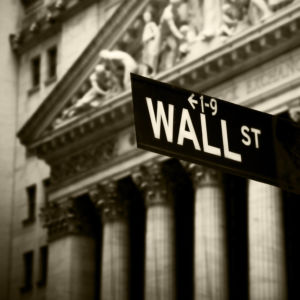Editor’s Note: For an alternative viewpoint, please see: Counterpoint: Dodd-Frank Does Not Make Us Safer
In debating whether or not to break up the big banks, there is a key misconception that has to be put to rest by both sides: another financial crisis will occur, regardless. Financial crises are part of the economic framework of capitalism, whether they are based on Dutch tulip mania in the 1600s, the Panic of 1907 with runs on banks and trusts, the savings and loan debacle of the 1980s, or the subprime mortgage meltdown of the last decade. History is clear, there is no magic solution to end financial crises based on the size or number of banks in a country.
What you can do is guard against financial crises, reducing their likelihood and mitigating their severity when they do occur. That is precisely what the Dodd-Frank Wall Street Reform and Consumer Protection Act of 2010 (Dodd-Frank) tries to accomplish.
Dodd-Frank enhanced bank regulators’ authority and responsibility to better regulate financial institutions, with extra emphasis on the largest, most risky and most complex banks. It created new authority to regulate large non-bank financial institutions whose failure could threaten the nation’s financial stability (such as AIG during the last crisis).
Importantly, Dodd-Frank created a new Consumer Financial Protection Bureau to regulate the practices of the Big Banks, and set and enforce consumer protections for many financial services products — regardless of whether they be offered by a bank or another lender. Remember: much of the subprime mortgage machine that caused the financial crisis occurred outside of the commercial banking system.
Another major innovation in Dodd-Frank was to give the financial watchdogs in Washington new tools to help them wind down large, complex financial institutions that run into trouble in an orderly way so as not to cause a financial panic nor require a bailout.
This regime has not been tested yet, although at some point, it will be. I share the optimism of many that this new regime will succeed when tested. If it does work, then our financial system will be far more resilient to shocks and bubbles. If bank regulators do not believe that it will work, they are legally empowered by Dodd-Frank to force large banks to reorganize themselves, including by forcing them to substantially shrink until they are in a structure that will allow them to fail — an important safety valve to consider when debating whether a more radical step of a government mandated break-up is required.
Breaking-up the banks requires a lot of hard choices that are not always spelled out by those who advocate for a break-up. There are several questions that might seem simple at first but are actually quite complex to answer, the first of which is: can I keep my bank?
Proposals to cap banks by size would likely result in many current customers being forced to change banks. It would make sense that banks would try to balance between their goal of shedding less profitable customers (who are often lower-income) and obeying fair-lending and equal-opportunity-to-credit laws. Regulators would have to decide how heavy a hand to play in shaping these decisions. In the end, consumers would likely be sent to alternative, smaller banks.
This would run contrary to consumer preference as, believe it or not, consumers have been choosing to go to large banks more and more since the financial crisis. This trend may very well be tied to economies of scale and scope that allow large banks to offer better, quicker and newer technology such as enhanced online and mobile banking, larger ATM networks, and a broader array of services.
Ask yourself and your friends who you bank with, or what bank you are advising your children to join when they grow up. Chances are they aren’t banking with the neighborhood equivalent of Jimmy Stewart’s bank in “It’s a Wonderful Life.”
There are other important questions regarding how a world with no large U.S. banks but large foreign banks would work for large American companies such as 3M or General Mills who sell products all over the world and value being able to work with global banks. There are impacts on how America’s capital markets, which provide debt financing for everything from local school districts to state governments to IBM, would be able to serve their customers. Small increases in the cost of capital can slow economic growth and increase costs for state and local governments.
Repairing our financial system to learn from the mistakes of the past crisis requires continued vigilance. There is still more that we can and should do. One example involves the regulation of auto lending, the second biggest loan most Americans ever take, after housing. Regulation of much of this lending was carved out of Consumer Financial Protection Bureau’s jurisdiction in Dodd-Frank thanks to the powerful automotive dealers lobby. Not surprisingly, a sharp increase, or as some have called it, a bubble, has formed in sub-prime auto lending.
Focusing political efforts to regulate questionable lending practices and products regardless of who is making the loan may prove more effective in making the financial system safer, stronger, and better for American families.

